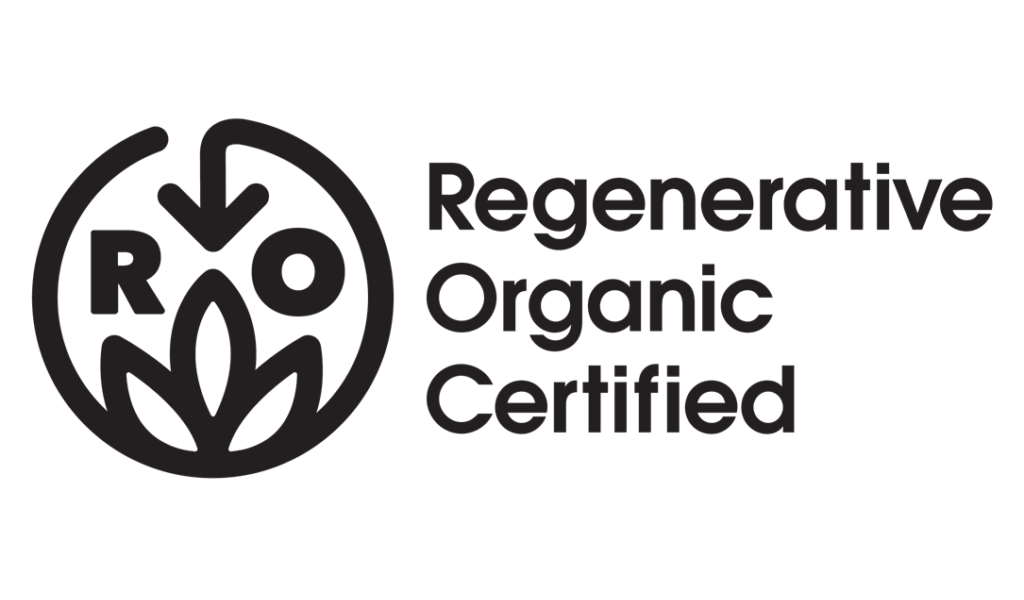A new Regenerative Organic Certification program is being developed that aims to build on existing organic rules and set a “high bar” standard for agricultural practices that regenerate the soil and sequester climate-changing carbon, provide economic fairness to farm workers, and improve animal welfare.
A coalition of farmers, ranchers, nonprofits, scientists, and brands led by organic research pioneer Rodale Institute worked together to develop the program, which will be administered by international certification specialist NSF International.
According to Jeff Moyer, executive director at the Rodale Institute, the term “regenerative agriculture” has its roots at Rodale.
“Bob Rodale started thinking about ‘regenerative agriculture’ back in the mid-1980s,” he says. “These words are the cornerstone of what Rodale has been about for about for a very long time.”
Regenerative agriculture is a concept that has gained more prominence in the last couple of years, particularly with the pressing challenges of climate change and the need to sequester carbon in the soil.
In 2016, Moyer began having discussions with David Bronner, president of Dr. Bronner’s Magic Soaps, and Rose Marcario, CEO of outdoor apparel manufacturer Patagonia, about the idea of a regenerative organic certification.
Marcario says Patagonia became involved because of the company’s mission of “wanting to do what’s best for the planet” and because of their experience in developing certification programs. Patagonia was also the first apparel company to switch to 100 percent organic cotton in its clothing,
“Over the years, we’ve developed a lot of standards,” says Marcario. “We are used to this relationship with certification and non-governmental organizations and the process itself.”
Other leaders in the organic farming movement joined the discussion including David Vetter, CEO and farmer of Grain Place Foods, Tim Joseph, founder of Maple Hill Creamery, Will Harris, owner of White Oak Farms. NSF, which has extensive experience in certification standards, joined the effort to create the standard.
“NSF has the capacity to take novel standards and put them into practice,” Moyer says.
The group worked for nine months to develop the certification.
“I think we have a nice constituency with brands and suppliers who are willing to go on the journey with us,” Marcario says. “I’m hoping this influences the industry in a positive way.”
Moyer emphasizes the new regenerative standard is based on the existing organic standard administered by the USDA’s National Organic Program.
“We’re saying that once you introduce agricultural chemicals into the system, it cannot possibly be regenerative, because you have already literally poisoned the well. We’re saying that in order to be regenerative you have to at least start with organic.”
The regenerative standard goes beyond organic, particularly with its emphasis on improving soil health.
“We pay lip service (to soil health) in the organic standard but the truth is that you can farm organically—meet the letter of the law—and still not improve the health of the soil you are farming,” Moyer says.
As a result, soil health is one of the three “pillars” of Regenerative Organic Certification with the goal to increase soil organic matter over time and sequester carbon in the soil. Recommended practices to accomplish this include the use of cover crops, diversified crop rotations, rotational grazing, and no synthetic inputs or GMOs.
Other pillars of the Regenerative Organic Certification program aim to address other gaps in organic certification including farmer and farm worker fairness and animal welfare.
“There are a few words in there (organic certification) about animal welfare but there are no teeth to it,” Moyer says. “The organic standard is also mute on worker fairness. You can buy a $400 coat made with organic cotton, and that cotton could have been harvested by 10-year-old girls.”
Another important aspect to the regenerative standard is that it provides a path to continuous improvement that organic currently lacks.
“In organic some have said there is no need or room for improvement, and many of us disagree and say there is room for improvement,” Moyer says. “Nobody at the Ford Motor Company said we really peaked with the Model T car. Ford is always trying to continuously improve their products. We wanted to create a high bar. Regenerative Organic gives farmers something new to strive for so they can have continuous improvement in their operations.”
Regenerative Organic Certification differs from a regenerative agriculture definition introduced earlier in the year, which is not restricted to organic practices, thus allowing conventional farmers to participate. Developers of that definition say that all of agriculture needs to be included to regenerate the soil and sequester carbon.
Moyer disagrees. “We’re saying that once you introduce agricultural chemicals into the system, it cannot possibly be regenerative, because you have already literally poisoned the well. We’re saying that in order to be regenerative you have to at least start with organic.”
Products that are certified will be able to display a Regenerative Organic logo.
“The goal is to have everything in one place that people can count on as a meaningful certification,” Marcario says.
The time is now for Regenerative Organic Certification, Marcario says.
“Regenerative Organic Certification represents an important moment. If we don’t act now, and start changing what we are doing, we’re not going to have the planet we are living on in 50 years. I hope more companies will join us on this journey around Regenerative Organic Certification and focus on making big changes in supply chains.”
The standard is now open to a public comment period at NSF’s website. To submit comments, visit http://standards.nsf.org/apps/group_public/document.php?document_id=39305.









